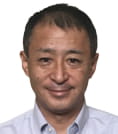- JST Home
- /
- Strategic Basic Research Programs
- /
 CREST
CREST- /
- Research Director/
- Large-scale genome synthesis and cell programming/
- [Genome programming] Year Started : 2019
[Genome programming] Year Started : 2019
Takashi Ito
Achieving constraint-free design and evolvability of synthetic genomes through new interpretations of DNA sequences
Grant No.:JPMJCR19S1
Research Director
Takashi Ito

Professor
Graduate School of Medical Sciences
Kyushu University
Collaborator
| Yasukazu Daigaku | Project Leader The Cancer Institute Japanese Foundation for Cancer Research |
Outline
This project aims to develop novel techniques to duplicate any regions in the genome, apply selection pressure to any genomic sequences, and introduce mutations throughout the target regions, by fully exploiting CRISPR-Cas system, two-hybrid system, and base editing enzymes in the baker’s yeast as a model system. We will combine these techniques to take a constructive approach to deepen the understanding of adaptive evolution by gene duplication. These techniques will provide an important step toward constraint-free design of evolvable genomes.
Wataru Iwasaki
Bioinformatics for predicting new functions in DNA sequence space
Grant No.:JPMJCR19S2
Research Director
Wataru Iwasaki

Professor
Graduate School of Frontier Sciences
The University of Tokyo
Outline
In the era of genome synthesis, new bioinformatic technologies for predicting new functions in DNA sequence space are needed. The aim of this project to develop such bioinformatic technologies to take full advantage of ever-increasing sequence data. Development of new biotechnological tools for modifying and controlling genomes is also envisioned.
Takehiko Kobayashi
Construction of gene amplification system and chromosomal vector
Grant No.:JPMJCR19S3
Research Director
Takehiko Kobayashi

Professor
Institute for Quantitative Biosciences
The University of Tokyo
Collaborator
| Masahito Ishikawa | Associate Professor Department of Bioscience Nagahama Institute of Bio-Science and Technology |
| Hiro-oki Iwakawa | Associate professor College of Science Rikkyo University |
Outline
We develop a gene amplification system that increases any genes. Moreover, using the amplification system, we make a chromosomal vector that clones ~100 genes. This vector makes it possible to construct heterogeneous physiological systems and to face establishment of artificial cells in the future.
Hiroyuki Noji
Artificial cell reactor system for long-chain DNA synthesis and creation of autonomous artificial cells
Grant No.:JPMJCR19S4
Research Director
Hiroyuki Noji

Professor
Graduate School of Engineering
The University of Tokyo
Collaborator
| Ryo Mizuuchi | Associate Professor School of Advanced Science and Engineering Waseda University |
| Takahiro Muraoka | Professor Graduate School of Engineering Tokyo University of Agriculture and Technology |
Outline
This project pursues novel technology of autonomous artificial cell reactors. We develop chemical microreactor systems that are capable to actively condense and hold biological macromolecules such as DNA and proteins and also to undergo cell-like morphological changes as growth, fission and division. We also develop new chemical/biological tool boxes in order to newly confer and enhance the functionalities of artificial cell reactors. By implementing cell-free systems for gene-replication and gene-expression in artificial cell reactors, we aim to create artificial cells with the capability of autonomous self-replication.
Makoto Miyata
Construction of cell evolution model using synthetic bacterium JCVI syn3.0B and genome manipulation
Grant No.:JPMJCR19S5
Research Director
Makoto Miyata

Professor
Graduate school of Science
Osaka Metropolitan University
Collaborator
| Daisuke Shiomi | Rikkyo University College of Science Professor |
| Akihiro Narita | Associate Professor Graduate Schcol of Science Nagoya University |
| Hideaki Matsubayashi | Assistant Professor Frontier Research Institute for Interdisciplinary Sciences Tohoku University |
| Robert Robinson | Visitting Professor Research Institute for Interdisciplinary Science (RIIS) Okayama University |
Outline
JCVI-syn3.0B is a synthetic bacterium established in 2016 on the basis of mycoplasma. Its genome consists only of genes essential for growth. In this study, we will transfer and express various genes into this synthetic bacterium, and experimentally reproduce events which happened in the evolution from primitive cells to eukaryotes, the acquisition of abilities such as motility, cell wall formation, DNA segregation, and membrane remodeling. Furthermore, new cell construction will be performed by free design of the cells.
Yoko Yamanishi
Delivery of long-chain DNA by the novel bubble injector and microstructures
Grant No.:JPMJCR19S6
Research Director
Yoko Yamanishi

Professor
Graduate School of Engineering
Kyusyu University
Collaborator
| Shigeo S.Sugano | Senior Researcher Bioproduction Research Institute National Institute of Advanced Industrial Science and Technology |
| Miho Tagawa | Professor Institute of Materials and Systems for Sustainability (IMaSS) Nagoya University |
| Tomomi Tsubouchi | Associate Professor Laboratory of Stem Cell Biology National Institutes of Natural Sciences National Institute for Basic Biology |
Outline
For applications of long-chain DNA to cell biology, delivery methods to cells are limited since long-chain DNA has both a bulky 3D structure and a high fragility to the physical stimuli. In this study, we will combine the novel bubble injector and the micro-structure to develop the new long-chain DNA delivery system.













